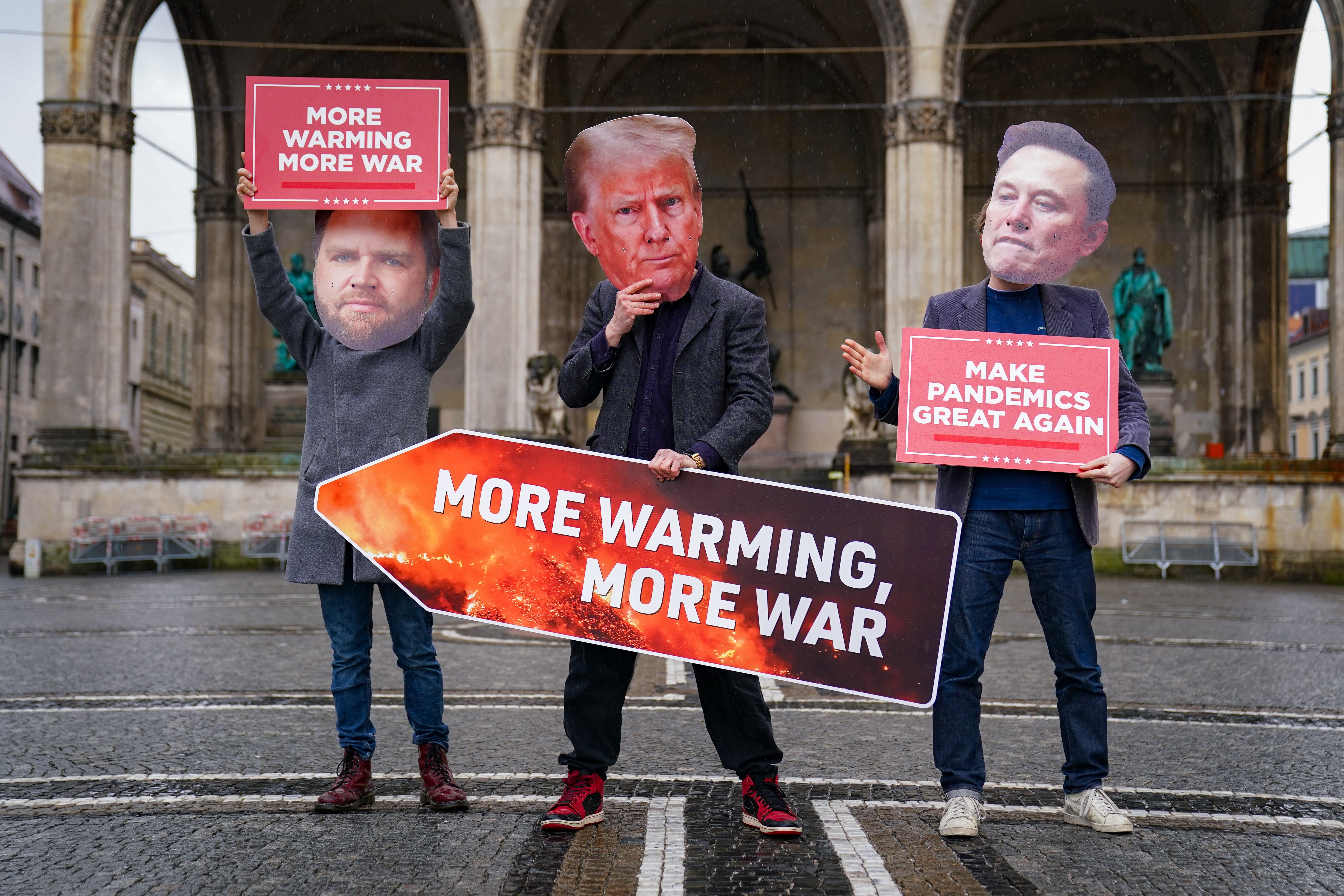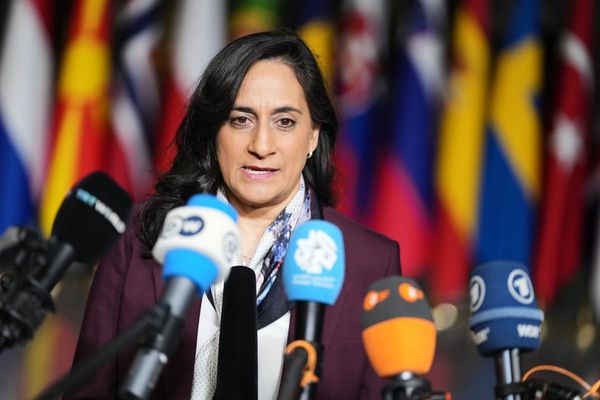
Millions of the world’s poorest people are set to suffer the consequences of Donald Trump’s decision to cut US aid – with funding for developing nations to mitigate and adapt to the climate crisis expected to plummet to zero this year.
Leaked Congress files show that more than 80 per cent of aid projects supported by the US Agency for International Development (USAID) have had their funding terminated, while the Trump administration has made clear that climate-related products are one the lowest priority areas. Africa – home to 23 of the world's 28 poorest countries – will be the hardest hit by the cuts,
Mohamed Adow, from the Nairobi-based climate think tank Power Shift Africa, believes that these cuts “could not have come at a worse time for Africa”.
“They will directly affect initiatives that help communities build resilience against climate impacts, such as droughts, floods, and desertification,” he says.
“In Kenya and Ethiopia, for instance, USAID has been pivotal in promoting sustainable agriculture practices and water management systems that are crucial in the face of increasingly erratic weather patterns, while in Zambia and Zimbabwe USAID has been supporting water conservation and renewable energy projects.”
The leaked files show numerous terminated projects that are examples of what Adow suggests, including a $35 million (£26m) project improving climate resilience in Ethiopian pastoral areas, a $40m project boosting water management systems in Kenya, and a $25m project in Zambia pushing low emission alternatives to cooking with charcoal.
This marks a dramatic shift from the last few months of Joe Biden’s presidency.
At the end of 2024, the US government announced record climate finance provision , totalling $11 billion: A figure seven-times greater than the $1.5bn recorded in the first year of the Biden Administration in 2021, which came in the wake of Trump’s first term.
In November, meanwhile, countries gathered in Baku, Azerbaijan, at the COP29 Climate Conference, where they came up with a brand new global target for the world’s developed countries to collectively provide at least $300 billion in climate finance to the world’s poorest countries by the year 2035. That total is nearly triple the $115.9bn that countries provided in 2022 – the last year for which there is complete global data – with the extra billions set to provide a crucial lifeline for developing countries looking to both adapt to their rapidly changing climates.
But while the about turn from the US has created worrying funding gaps in the short term, experts in the field have said that there is still hope that other countries of the world will be able to rally round and meet that multi-billion dollar climate finance target.
For starters, there is the fact that the US has not traditionally been one of the largest contributors to climate finance. Japan, Germany, the EU and France – which collectively provided more than 50 per cent of global climate finance aid in 2022 – all gave significantly more than the US that year to help developing nations adapt to a changing climate.
Even the Biden-increased spend of $11bn in 2024 would still only come third on the 2022 list after Germany and Japan.
“Based on its historical emissions or its GDP, the US should be responsible for some 40 per cent of climate finance,” says Ian Mitchell, from the Center for Global Development (CGD) think tank. “But in most years, it has provided less than 10 per cent of the total.”
With the US out the picture for at least the next four years, there is hope that other countries will feel motivated to fill in the gap .
“Other countries in Europe have also cut their aid budgets, but there is particular pressure on them to maintain their climate finance numbers”, says Gaia Larsen, director of climate finance access at the World Resources Institute (WRI) research NGO.
Then there are emerging economies like UAE – which runs Alterra, a $30bn climate-focused investment fund – and China, which announced in September that it would invest $50bn in infrastructure in Africa over the next three years. However, experts warn that the kind of loan-based finance that these sources offer is no match for the financing that USAID used to give, much of which came in the form of grants.
For Bella Tonkonogy, an expert at the Climate Policy Initiative think tank, perhaps the biggest cause for optimism can be found in the developing countries themselves, many of which have rapidly-growing economies and increasingly powerful financial institutions of their own.
“Countries like Vietnam and the Philippines are now building renewables with a lot of local finance,” says Tonkonogy. “Countries including Kenya have also said that they want to shore up their own finances and become less reliant on donor countries.

But even before Trump’s latest term in the White House is up, the US cuts to climate aid may never be quite as drastic as President Trump intends due to a quirk in how foreign aid is tracked by the Organisation for Economic Co-operation and Development (OECD), which is the forum of wealthy nations that oversees and tracks foreign aid spending.
“Climate” is not an aid category in itself, according to the OECD, but is instead a secondary category that can be tagged to other aid types, such as energy, health, or development. So funding of some projects could continue, even if it is not marked as being climate-based.
“Members of the [Trump] administration have said that they are still interested in investing in new markets... And investing in renewable energy [is] a big part of that,” says Tonkonogy.
Where the US is investing in infrastructure abroad, it seems likely that the administration will also look to make that infrastructure weather- and disaster-resilient, which will be their way of ensuring that investments are suitably-adapted to changes in the climate, even if they never acknowledge it as that, adds Tonkonogy. Which will help the countries in which it is built.
The US government is, for example, a major financial backer via the IDFC of the Lobito Rail Corridor, which is a huge infrastructure project connecting cobalt and copper mines in Zambia and DR Congo to the port of Lobito, Angola, in a project seen as seeking to counter growing Chinese influence in the region.
The US ambassador to Angola recently confirmed that plans have so far not been affected by Trump’s spending cuts. “Climate resilience” remains a key aspect of how the project is being designed and implemented.
“There is one scenario where the US government just completely pulls back and stops investing in anything overseas,” suggests Tonkology. “But if the US does continue to invest abroad, it is likely that there will be at least some tacit financial support of climate [issues].”
This story is part of The Independent’s Rethinking Global Aid project
Current climate path condemns tens of millions of children to unmanageable heat
Alcatraz seabirds could be further threatened under Trump plan
Climate change made South Korea’s deadliest wildfires twice as likely
Donald Trump protest art created on beach near Turnberry golf resort
Drought risk warning issued after England’s driest start to spring since 1956
World’s richest 10% responsible for two-thirds of global warming since 1990







